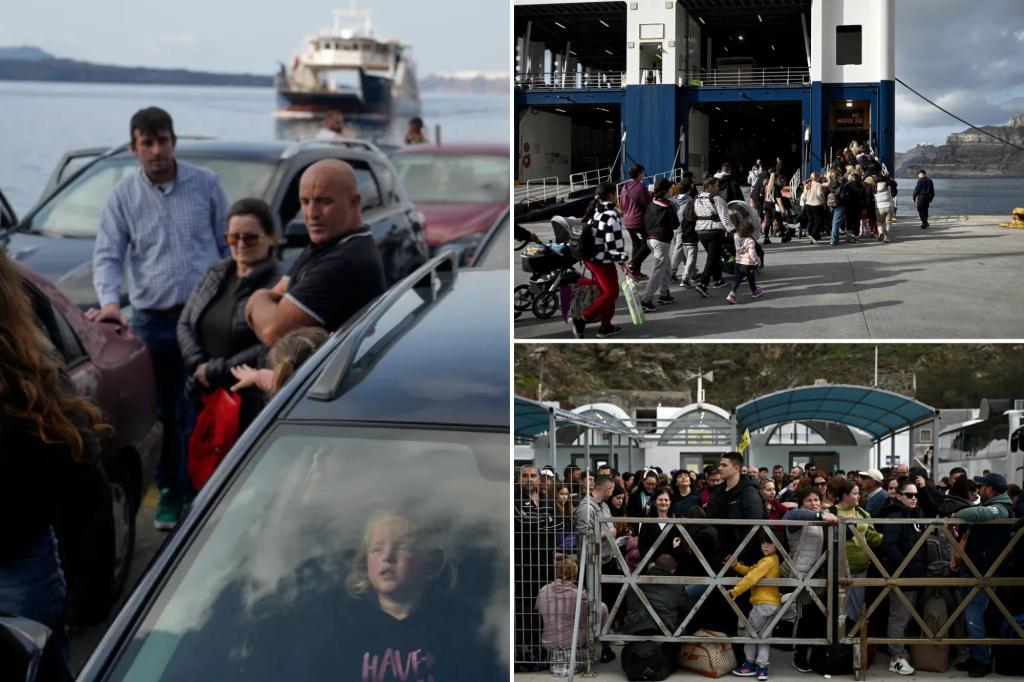Thousands evacuate Santorini as dozens of earthquakes rattle Greek island – New York Post

Another swarm of earthquakes shook the Greek islands in the Aegean Sea on Tuesday morning, including the popular tourist destination of Santorini, officially known as Thira.Tuesday morning’s quakes included two magnitude 5.1 earthquakes centered in the Aegean Sea north of Santorini.Greek officials are warning those on Santorini to stay alert in the coming days due to increasing seismic activity, which could mean a strong earthquake is imminent.Officials from Greece’s Ministry of Climate Crisis and Civil Protection and the fire departments have been meeting daily since the seismic activity first began over the weekend. While only about 20,000 people call the island home, more than 3.4 million tourists visited last year. Schools are now closed through Friday, and people on the island are being instructed to drain swimming pools, avoid large gatherings inside buildings and stay away from abandoned buildings.Greek news website protothema.gr reported people were sleeping in their cars during the seismic outbreak. Fire rescue personnel are being brought onto the island to respond to the earthquakes. On Monday, after a night of shaking, hundreds of people lined up to board ferries to leave the island. By Tuesday, Greek state media reported that more than 6,000 residents had left Santorini.The Civil Protection warned against staying near the ports, including Ammoudi, Armeni, Korfou and the Old Port of Fira.Officials said that if strong seismic shaking is detected, coastal areas could be evacuated. The U.S. Embassy in Greece is warning American travelers to avoid those areas of concern identified by the Greek government.According to the Civil Protection advisory, more than 200 earthquakes were measured over the weekend in the Anydros area between Thira and Amorgos.On Monday, the shaking continued, with earthquakes detected near Amorgos and Fira, the capital city of Santorini. Earthquake intensity increased, with the strongest quake reaching over magnitude 5. Santorini was shaped by a volcanic eruption more than 3,500 years ago. The volcano remains active but has not erupted since 1950. However, experts warn the earthquake swarm is not tied to volcanic activity. Greek Seismologist Gerasimos Papadopoulos said the seismic activity is definitively tectonic and not volcanic. Papadopoulos wrote on Monday that new stronger earthquakes confirmed “that we are in an intense pre-seismic sequence,” adding that these events can last up to four months. “I will not be tempted to say the size of an expected main earthquake,” he said.According to the U.S. Geological Survey, the Mediterranean region is seismically active because of the convergence of the African plate and the Eurasian plate. The highest rates of seismic activity are found in southern Greece, western Turkey and southern Italy.Advertisement






